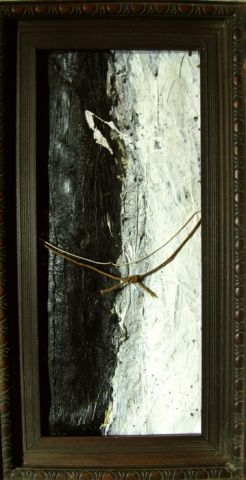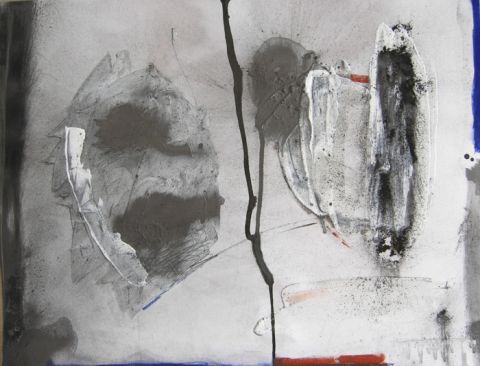I have read several references lately to artists who surround their work with complicated language to puff-up simple ideas attempting to make their work and themselves look more clever than they are, (to paraphrase Dan Thompson describing the clarity of Nicola Dale’s writing style in her blog, The Collaborator) or as Jo Moore elegantly said, ‘there are many people whose work is less than the myth they’ve built around it’. And just in case my slender Cinderella foot fits that shoe, I am going to put myself to the test.
I have no way of knowing if either Dan or Jo have read my blog or seen my work. Actually, Jo did say once there were some interesting ideas in my blog and she was going to sit down with a cup of tea and read more, but I don’t know if she ever did or what she may have thought. So I have no idea whether I am included in this puffed-up group of artists in their minds. As my thoughts and images are visible in the general milieu I think I had better do some soul searching and test myself.
I thought of Gerhard Richter’s comment on his figurative paintings, ‘I wanted to make a photograph’. That is about as simple a statement as one can make. So following his example, my intentions are never fully realized. However, there are lots of questions surrounding his desire to ‘make a photograph’ out of paint and I believe there may be questions as to why my intensions are never fully realized.
I work with gesture because it represents a moving body and a thinking self. A moving body is a body in context. The context creates a paradox. Context defines the identity of the self, but diminishes the power of identity to fully realize itself. My interest is in this paradox and the effect of context on identity rather than identity for its own sake.
It is impossible for me to see my work with the unbiased eye of another, so it is impossible for me to know if I’m spouting a bunch of flowery (or floury!) rubbish that is not apparent in my work. I think about these things and they are circling in my head as I work so I think they must be apparent. The following questions perhaps will test it.
– Is gesture visible in my work? yes
– Is the concept of context and therefore conflict visible in my work? yes
– Is the self or an identity visible? yes, perhaps in a latent or symbolic way.
– Is duality or an identity which is separated visible? yes
– Is it evident that the self is never fully realized? I think this must be yes if the answer to the question above is yes.
– Is it evident the self is fleeting and tenuous? yes
But then perhaps it was predictable that my answers would be ‘yes’ because, as I said, this stuff is circling in my head as I work, so I think it must be visible. It is one of the pitfalls of working in isolation, thinking becomes a bit circular and I can become dizzy very easily. I would be very interested to know what you think and how you may answer these questions, or if you have any questions to pose to me instead of these.



